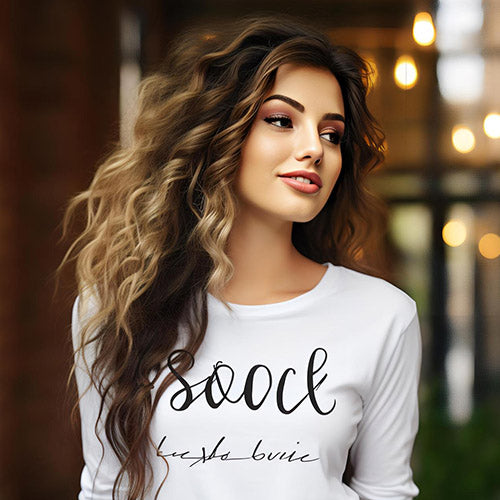How to Choose the Best T-Shirt Design for Your Custom Order
Introduction to Custom t shirt printing
Customt shirt printing are a versatile medium for expression, branding, and connection. Whether you’re looking to promote a business, celebrate an event, or create a unique fashion statement, a well-executed t-shirt design is key. This guide will take you through each step of the design process, ensuring you create a t-shirt that meets your needs and captivates your audience.
Defining Your Purpose
Event or Business Goals
Identify the primary goal of your custom t-shirt printing. Are you aiming to increase brand visibility, unify a team, or commemorate a special event? Your objective will influence the design’s theme, style, and content.
Personal Use
If the t-shirt is for personal use, consider what message or aesthetic you want to convey. Whether it’s a hobby, a personal mantra, or a piece of artwork, make sure the design reflects your individuality.
Understanding Your Audience
Target Demographics
Knowing your audience helps tailor the design to their tastes and preferences. Consider factors like age, gender, and cultural background. For instance, a design appealing to young adults may differ significantly from one aimed at corporate clients.
Style Preferences
Analyze current trends and popular styles within your target demographic. Are they more likely to appreciate minimalist designs, bold graphics, or vintage looks? Use this insight to guide your design choices.
Crafting Your Design Elements
Typography
Choose fonts that align with your message and are easy to read. Bold, sans-serif fonts work well for modern designs, while decorative fonts might suit more casual or themed t-shirts.
Graphics
Select graphics that complement your overall theme. Ensure they are high-quality and scalable to maintain clarity and impact, whether they're logos, icons, or illustrations.
Logos
Incorporate logos thoughtfully, balancing them with other design elements. Make sure the logo is clear and visible without overpowering the rest of the design.
Choosing the Right Colors
Color Psychology
Colors influence emotions and perceptions. Use color psychology to select hues that convey the desired mood and message. For example, blue can evoke trust, while red often suggests excitement.
Color Harmony
Ensure your color choices work well together. Use tools like Adobe Color to create palettes that offer good contrast and visual appeal.
Selecting T-Shirt Material
Fabric Options
The choice of fabric affects both comfort and print quality. Common options include cotton, polyester, and blends. Cotton is breathable and soft, while polyester is durable and holds colors well.
Printing Considerations
Different fabrics interact uniquely with printing methods. Cotton is ideal for screen printing, while polyester works better with dye-sublimation. Ensure the fabric choice complements your chosen print technique.
Exploring Print Techniques
Screen Printing
Best for bulk orders and designs with few colors. Screen printing provides vibrant, durable prints but can be limited in detail and color gradient.
Direct-to-Garment (DTG)
DTG printing excels with detailed, multicolor designs. It’s suitable for small orders but may not be as durable as screen printing.
Vinyl Printing
Vinyl printing involves heat-pressing cut-out designs onto the fabric. It’s ideal for bold, simple graphics and offers a smooth finish.
Determining Design Placement
Front and Back
The front of the t-shirt is typically reserved for the main design or message, while the back can include additional details like event dates, logos, or supplementary graphics.
Sleeve Prints
Sleeve prints add a subtle touch of design, perfect for logos or small symbols. They offer an extra dimension to your t-shirt without overwhelming the main design.
All-Over Prints
All-over prints cover the entire t-shirt, creating a bold and eye-catching look. This requires careful planning to ensure the design aligns and flows seamlessly.
Balancing Graphics and Text
Text Size
Ensure text is large enough to be legible but not so big that it dominates the design. The balance between text and graphics is crucial for readability and visual harmony.
Font Choice
Select fonts that match the design’s tone and are easy to read. Avoid overly decorative fonts that may obscure the message.
Visual Hierarchy
Create a visual hierarchy to guide the viewer’s eye through the design. Use different sizes and weights for text and graphics to emphasize key elements.
Creating a Mockup
Digital Mockups
Digital mockups allow you to visualize your design on the t-shirt. Use tools like Adobe Photoshop or online platforms to create accurate representations of the final product.
Physical Samples
Order physical samples to check the design’s real-world appearance and quality. This can help identify potential issues before mass production.
Budgeting for Your Project
Cost Breakdown
Consider costs for design creation, printing, and materials. Screen printing is cost-effective for large runs, while DTG may be better for smaller orders with complex designs.
Economies of Scale
Ordering in bulk can reduce the cost per unit, making it more affordable. Plan your order size based on budget and demand to optimize costs.
Staying Updated with Design Trends
Current Trends
Stay informed about current trends in t-shirt design to keep your product relevant and appealing. Trends can influence everything from color choices to graphic styles.
Classic vs. Modern
Decide whether to follow trends or opt for a timeless design. Trendy designs may offer immediate appeal but can become outdated, while classic designs have longer-lasting relevance.
Ensuring High Print Quality
Image Resolution
Use high-resolution images (300 DPI or higher) to avoid pixelation. Vector graphics are ideal for scalability and clarity.
Print Durability
Choose printing methods and materials that ensure the longevity of your design. Durable prints maintain their appearance after multiple washes.
Collaborating with Designers
Finding Designers
Work with professional designers or use design platforms to find talent. Review portfolios to find designers whose style matches your vision.
Effective Communication
Communicate your ideas clearly and provide constructive feedback. Establish deadlines and milestones to keep the project on track.
Gathering Feedback and Testing
Audience Reactions
Collect feedback from your target audience through surveys or focus groups. This helps refine the design to better meet their preferences.
Prototyping
Create prototypes to test the design’s appeal and functionality. Use this feedback to make final adjustments before full production.
Legal and Ethical Considerations
Copyright Compliance
Ensure all design elements are original or properly licensed. Avoid using copyrighted materials without permission to prevent legal issues.
Trademark Laws
Be mindful of trademarks, especially if incorporating logos or brand names. Verify you have the right to use any trademarks in your design.
Planning for Large Orders
Scalability
Designs intended for large orders should be simple and bold. Intricate details may not translate well at scale and can increase production complexity.
Bulk Order Tips
Coordinate with your printer to understand how order size impacts costs and timelines. Bulk discounts can make larger orders more economical.
Considering Environmental Impact
Sustainable Fabrics
Choose eco-friendly fabrics like organic cotton or recycled polyester. These options reduce environmental impact and appeal to environmentally conscious consumers.
Eco-Friendly Inks
Use water-based or other eco-friendly inks for printing. They offer a greener alternative to traditional inks and align with sustainable practices.
Utilizing Online Design Tools
Design Software
Leverage software like Adobe Illustrator or Photoshop for advanced design capabilities. These tools offer flexibility and precision for creating intricate designs.
Online Templates
Use online templates to streamline the design process. Platforms like Printful and Placeit offer templates that make it easy to create mockups and visualize designs.
Finalizing Your Design
Proofing
Review proofs to ensure all design elements are accurate. Check for color consistency, placement, and overall appearance before approving for production.
Approval Process
Establish a clear approval process involving all stakeholders. This ensures that everyone agrees on the final design before moving forward.
Preparing for Production
Submitting Design Files
Submit high-resolution design files in the required format (e.g., PNG, AI). Include detailed instructions for colors, placement, and any other specifications.
Production Checklist
Create a checklist to verify all aspects of production, from design approval to material selection. This helps ensure a smooth transition from design to production.
Evaluating the Finished Product
Quality Assurance
Inspect the final product for print quality, color accuracy, and material consistency. Address any issues with the printer immediately to maintain quality standards.
Customer Feedback
Collect feedback from customers to assess their satisfaction with the design and quality. Use this input for future improvements and adjustments.
Marketing Your Custom T-Shirts
Digital Marketing
Promote your t-shirts through social media, email marketing, and online ads. Showcase your designs with high-quality images and engaging content.
E-commerce Setup
Integrate your t-shirt designs into your e-commerce platform. Ensure the online store provides an easy and appealing shopping experience for customers.
Avoiding Common Pitfalls
Overcomplicated Designs
Keep your design simple and clear. Overly complex designs can be difficult to print and may not resonate well with your audience.
Misaligned Expectations
Set realistic expectations for design and production timelines. Clear communication with your printer and designer can help avoid misunderstandings.
FAQs About T-Shirt Design
What is the most durable print technique for t shirt printing?
Screen printing offers the best durability, especially for large orders with simple designs.
How can I make my t-shirt design eco-friendly?
Use sustainable materials like organic cotton and eco-friendly inks. These choices minimize environmental impact.
Can I use copyrighted images in my t shirt printing?
Only if you have permission or the image is in the public domain. Otherwise, you risk legal issues.
How do I choose the best color combinations for my design?
Use tools like Adobe Color to create harmonious palettes. Consider your brand's colors and the psychology behind them.
What should I consider when placing a design on t shirt printing ?
Consider the t-shirt’s cut and fit. Ensure the design placement enhances the overall appearance without distorting the graphics.
How can I ensure my design looks good on different sizes?
Use scalable vector graphics and test your design on various sizes. This ensures it remains clear and effective across all sizes.
Conclusion: Making Your Design a Reality
Creating a custom t-shirt design involves careful consideration of your goals, audience, and design elements. By following these guidelines from Customania, you can craft a t-shirt that is not only visually appealing but also aligned with your objectives and audience preferences. Whether for personal use or business promotion, the right design can make your t-shirt a standout piece.




